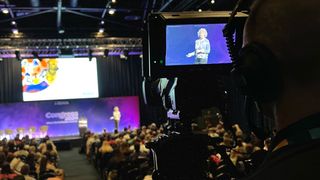Illuminating the Influence of Lighting Methods on the Craft of Video Projections Mapping
Illuminating the Influence of Lighting Methods on the Craft of Video Projections Mapping
Blog Article
Motion mapping projection is an exciting creative form that combines technology and innovation to transform ordinary spaces into extraordinary visual exhibits. This technique entails projecting graphics and videos onto 3D objects, such as structures, sculptures, or platforms. One of the most significant factors in producing successful mapping is the use of efficient illumination techniques. Proper illumination enhances the aesthetic components of the projection and ensures that the visuals are clear and captivating. This article examines the impact of illumination methods on video mapping and how they can elevate the complete encounter.
Illumination plays a vital part in video mapping because it establishes the mood and feel of the display. Different lighting techniques can elicit various feelings and reactions from the audience. For example, using soft, warm illumination can create a inviting environment, while bright, cold lights may produce a more energetic or dramatic impact. By thoughtfully selecting light colors and brightness, creators can influence how audience interpret the projected visuals, leading to a more immersive experience. The equilibrium between mapping brightness and surrounding illumination is essential, as it can greatly impact the clarity and impact of the visuals.
In addition, color and intensity, the angle of illumination also influences the efficacy of mapping. Illumination from different directions can generate contrast and accents that introduce depth to the projected visuals. This technique, known as light and shadow, can enhance the three-dimensionality of the objects being mapped. Furthermore, using moving illumination can add energy to the exhibit, making the encounter more involving for the audience. When the light interacts with the projected visuals, it can create an illusion of movement and change, grabbing the read this post here audience's focus.
Another important element of illumination in mapping in the use of special effects. Techniques such as gobo lighting, which uses shapes and shapes to project light, can introduce depth and intricacy to the mapping. This approach enables creators to superimpose images and create visually stunning effects that complement the projection. Moreover, adding lasers or LED lights can further enhance the display, offering a unique blend of sight components that attract the viewers in. These unique features, when used thoughtfully, can elevate the projection into a basic show to an engaging piece of creativity.
In conclusion, the impact of illumination techniques on video mapping is significant. By comprehending how various illumination components interact with mapped visuals, creators can create captivating experiences you could try this out that resonate with audience. The thoughtful choosing of hue, intensity, direction, and special effects allows for a rich tapestry of sight narrative. As tech advances to grow, the possibilities for creative expression in mapping will only expand, making illumination an increasingly vital aspect in this progressive creative medium.